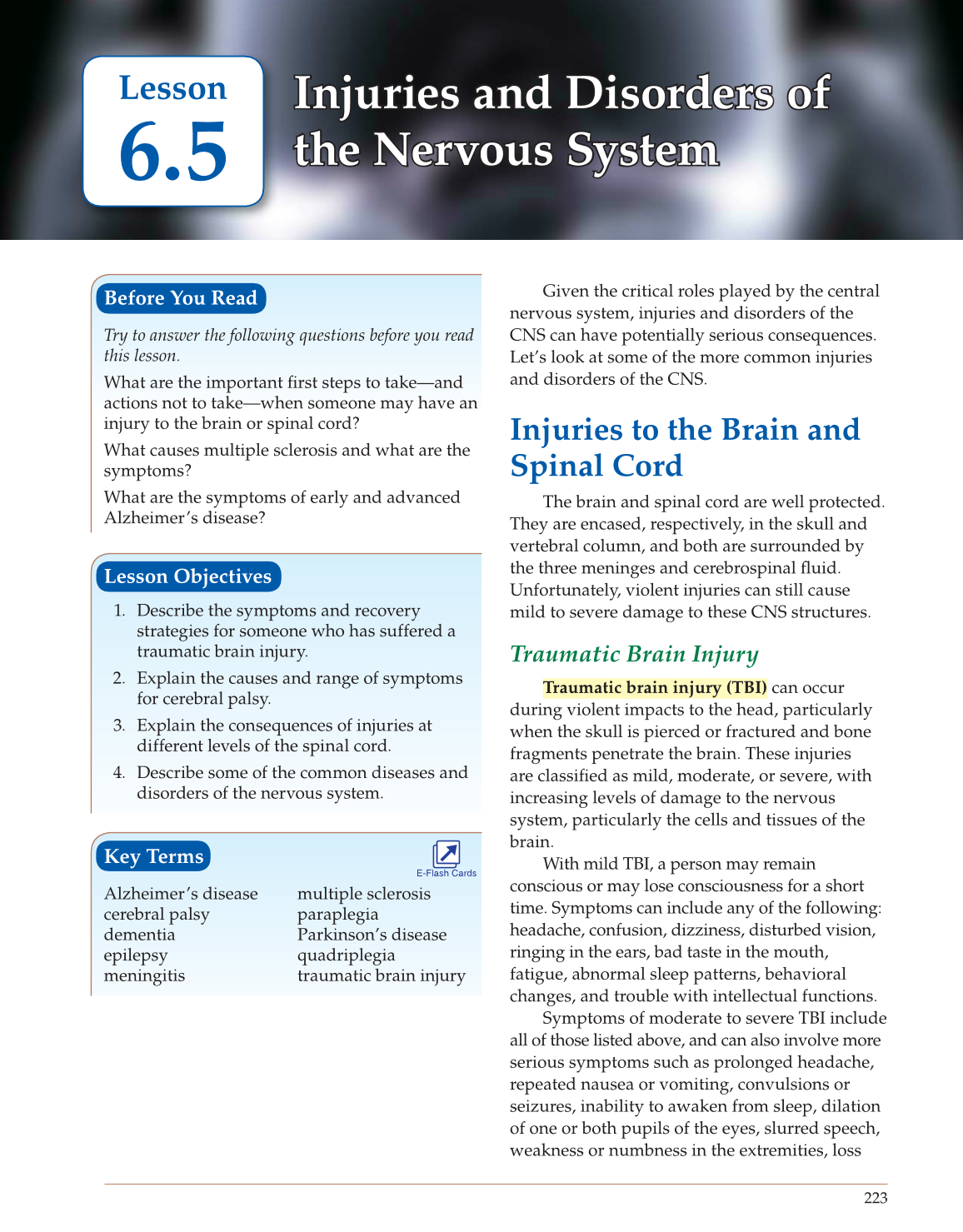223
Lesson
Given the critical roles played by the central
nervous system, injuries and disorders of the
CNS can have potentially serious consequences.
Let’s look at some of the more common injuries
and disorders of the CNS.
Injuries to the Brain and
Spinal Cord
The brain and spinal cord are well protected.
They are encased, respectively, in the skull and
vertebral column, and both are surrounded by
the three meninges and cerebrospinal fl uid.
Unfortunately, violent injuries can still cause
mild to severe damage to these CNS structures.
Traumatic Brain Injury
Traumatic brain injury (TBI) can occur
during violent impacts to the head, particularly
when the skull is pierced or fractured and bone
fragments penetrate the brain. These injuries
are classifi ed as mild, moderate, or severe, with
increasing levels of damage to the nervous
system, particularly the cells and tissues of the
brain.
With mild TBI, a person may remain
conscious or may lose consciousness for a short
time. Symptoms can include any of the following:
headache, confusion, dizziness, disturbed vision,
ringing in the ears, bad taste in the mouth,
fatigue, abnormal sleep patterns, behavioral
changes, and trouble with intellectual functions.
Symptoms of moderate to severe TBI include
all of those listed above, and can also involve more
serious symptoms such as prolonged headache,
repeated nausea or vomiting, convulsions or
seizures, inability to awaken from sleep, dilation
of one or both pupils of the eyes, slurred speech,
weakness or numbness in the extremities, loss
6.5
Injuries and Disorders ofof Injuries and Disorders
the Nervous System the Nervous System
Before You Read
Try to answer the following questions before you read
this lesson.
What are the important fi rst steps to take—and
actions not to take—when someone may have an
injury to the brain or spinal cord?
What causes multiple sclerosis and what are the
symptoms?
What are the symptoms of early and advanced
Alzheimer’s disease?
Lesson Objectives
1. Describe the symptoms and recovery
strategies for someone who has suffered a
traumatic brain injury.
2. Explain the causes and range of symptoms
for cerebral palsy.
3. Explain the consequences of injuries at
different levels of the spinal cord.
4. Describe some of the common diseases and
disorders of the nervous system.
Key Terms
Alzheimer’s disease
cerebral palsy
dementia
epilepsy
meningitis
multiple sclerosis
paraplegia
Parkinson’s disease
quadriplegia
traumatic brain injury
E-Flash Cards
